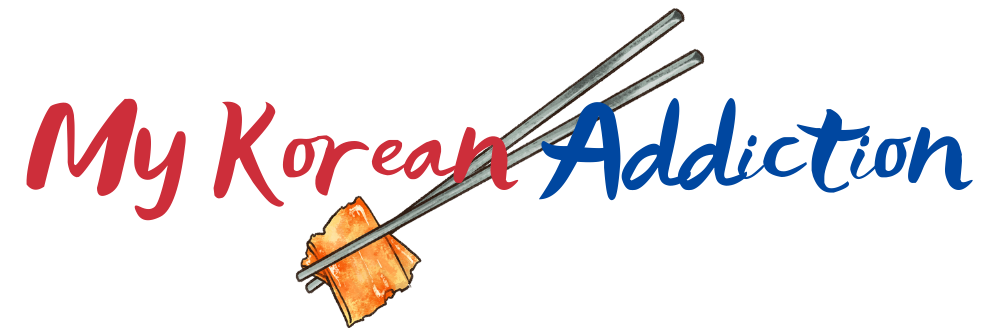Attending a funeral anywhere around the world is a somber affair. It’s a day of grief to mourn the loss of a loved one and simultaneously celebrate the life they’ve lived.
Korean funerals are the same, and yet there are some traditional customs and etiquette that deviate from the usual Western-style funeral.
Koreans are guided by the rules of Confucianism, and so are their funeral traditions. They believe that the deceased will leave the world into the afterlife, but if they don’t transition properly, they will end up as a wandering ghost – a ‘kaekkwi’.
Thus, many Korean funeral customs and etiquette revolve around assisting the deceased with moving on.
Are you attending a Korean funeral sometime soon? This article can help you learn about things you should know before the affair. Below we’ve listed 10 Korean funeral customs and etiquette you can familiarize yourself with.
1. ‘Sangju’ is the Chief Mourner
‘Sangju’ is the role taken on by the first son or grandson of the deceased. Korean custom dictates that he ‘let’ his parent/grandparent die and thus as an expression of filial piety, he must take charge of the pre-burial, funeral rites, and memorial.
Before the funeral day, the sangju has many responsibilities. They must prepare and dress the body as well as organize the entire funeral service. On the day of a Korean funeral, you will likely see the sangju perform or lead many of the rituals.
The sangju will likely be the first person you greet at the entrance.
2. Mourning occurs over three days
The length of Korean funerals used to be based on the social status of the deceased (i.e., the higher the status, the longer the funeral), however these days, three days is the average length.
The three-day period of a Korean funeral is inclusive of the funeral procession, the burial, and continuous visits from family members, particularly the sangju. If the funeral is held in a hospital, which many modern ones are, then the hospital may even offer dining rooms and bedrooms for families to stay and mourn without needing to go home.
Mourning begins on the day of the death. Loud wails are meant to be indicative of the emotions felt by the family, so making loud cries is accepted and even expected.
Wailing is not uncommon over the entire three days. Traditionally, though, there are three different periods of wailing: after death, after the body is washed, and post-burial.
3. Eating and drinking
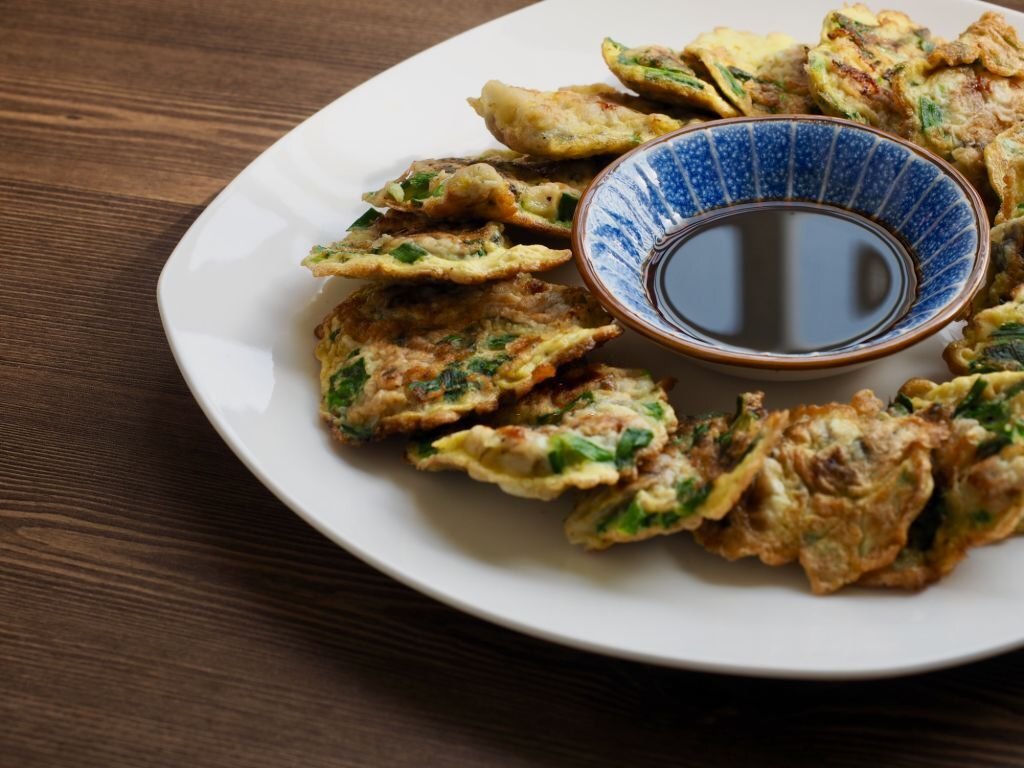
After you show your respects, don’t be surprised to be led to a hall prepared with food and drinks.
Eating and drinking at the funeral is a sign of good manners and will help the deceased’s spirit transition along their journey into the afterlife. It is usually the female family members who serve these items to the attendees.
Most Korean funeral halls will prepare the same meal: spicy soup, jeon, meat, fish, etc…
4. Music
During traditional Korean funerals, pallbearers would cry out chants whilst carrying a large stand for the coffin. Four types of songs were sung, and this was practiced the night before the procession.
This practice is slowly dying out. These days, modern funeral homes impose noise restrictions and also don’t have the space for pallbearers to carry a coffin through their narrow halls.
Pallbearers still perform in smaller villages in Korea, but it’s likely that only the older generation knows about and understands them.
There are organizations in Korea today that are fighting to keep the tradition alive and provide free traditional pallbearing processions.
You May Also Like: Korean Etiquette – 15 Things Not To Do In Korea
5. Wear black
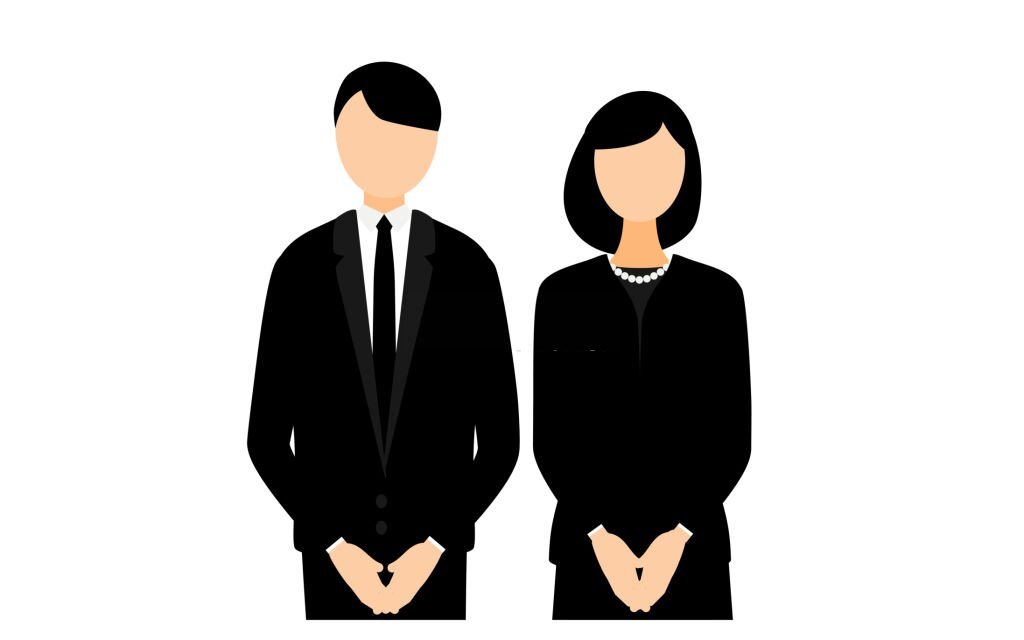
Wearing black is expected at a Korean funeral. Bare skin is frowned upon, so try and wear clothing that covers the body. Try to avoid sneakers and slippers and opt for more formal shoes.
Families of the deceased typically wear black hanbok (traditional Korean attire) that may include a hemp hat and leggings, and accessories made from hemp. The sangju will usually be seen with an armband and women might wear a white ribbon hairpin.
If you need to deviate from black, try and opt for darker colors and avoid red and bright colors.
You May Also Like: Full Guide To Norigae, Korean Traditional Ornament
6. Condolence money

Condolence money is expected if you’re a guest at a Korean funeral. Traditionally, you would give any amount with the numbers 3, 5, 7, and 10 in them. However, these days, anywhere between 50,000 won ($39) to 100,000 won ($78) is acceptable.
With the rising costs of funerals, this condolence money will go towards assisting the family to cover the costs.
If you cannot attend the funeral, it is best to organize your condolence money beforehand to reach the bereaved family to show your respect.
7. Envelope for condolence money
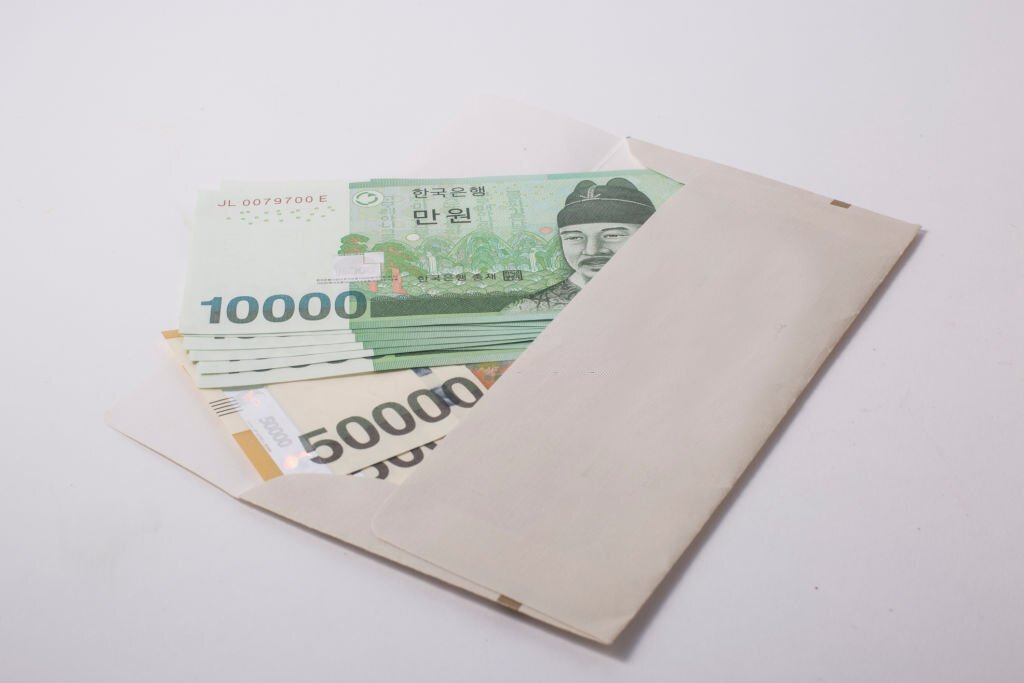
It is important to prepare the condolence money in a proper envelope before you hand it over to the family.
Once you place the bills inside the envelope, you should write any particular phrase from the following: 부의(賻儀), 부조(謹弔), 추모(追慕), 추도(追悼), 애도(哀悼), 위령(慰靈)
They are the proper words to offer condolence to the family. You must also write your name vertically along the back.
8. Flowers
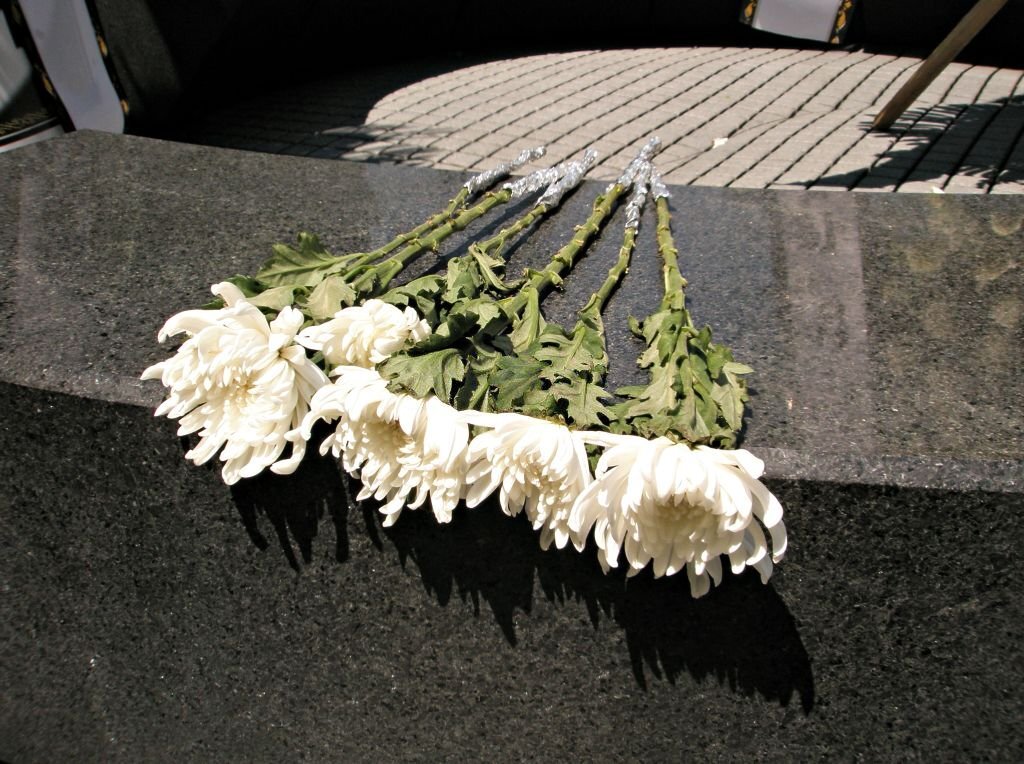
Flowers are not expected nor are they necessary as a guest at a funeral. The large chrysanthemum wreaths that you see adorning the shrine are typically organized by the family or are provided by large organizations.
If you’d like, you can bring a small bouquet of white or yellow flowers to place on the shrine. Avoid any florals that are red or green.
Condolence money is becoming more of the norm than bringing flowers these days.
Read More: Guide To Korean Traditional Wrapping Clothes
9. Cremation instead of burial
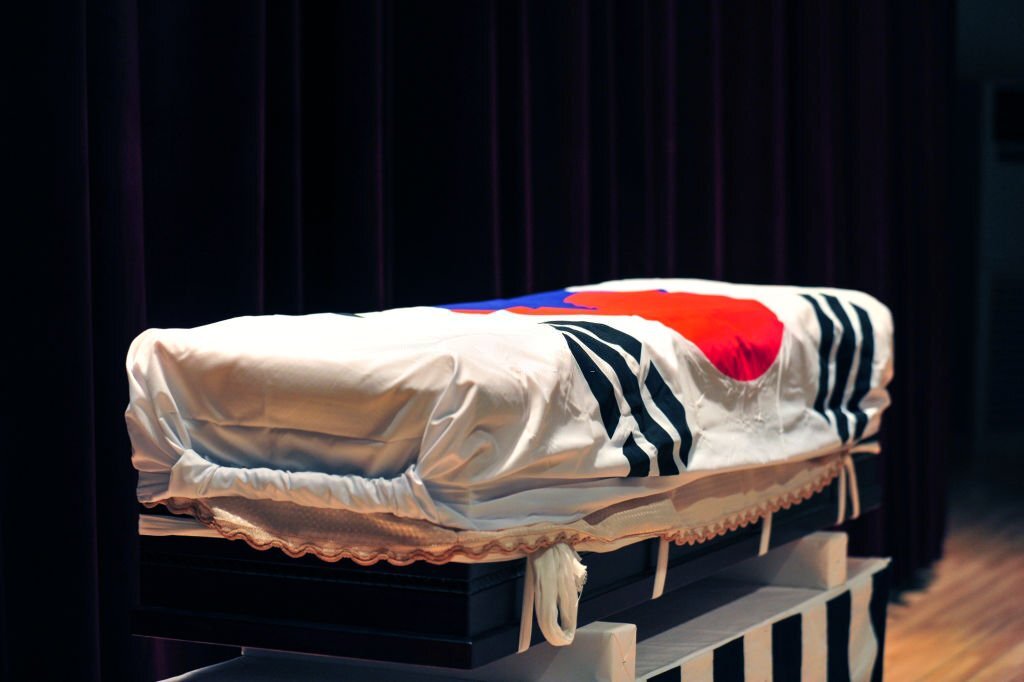
Traditional Korean funerals often resulted in the burial of the body. These days, many families opt to cremate their loved ones instead.
This is in part due to the fact that it is getting more difficult to find burial spaces across cemeteries, but it also helps to keep the costs down whilst still honoring the dead.
After the cremation process, Koreans usually keep the ashes of the dead in special containers in their home to honor them.
Read More: Discover Ondol, Korean Traditional Heating System
10. Entering the altar room
The process of entering the altar room is easy but you must try and remember the order.
Family members of the deceased will usually greet visitors at the entrance. You must first offer a small bow to the sangju and then write your name in the guest book. At the same time, hand over the envelope of condolence money.
Try not to shake their hand, as handshakes are seen as an expression of joy and are improper for a funeral.
You then move to the altar room and take off your shoes before you enter. Burn an incense stick or place a chrysanthemum flower on the altar.
Take a bow towards the portrait of the deceased. To do this in the Korean way, place one hand on top of the other and raise them to eye level. Slowly kneel down and bow until your hands reach the floor.
You must remember to bow only twice, as bowing three times is reserved for more joyous occasions such as New Year.
Read More: All You Need To Know About Bowing In Korea
—
We hope that from reading this article, you have a better idea about how to approach a Korean funeral. Knowing about the main customs and etiquette is a major sign of respect, and once you familiarize yourself with them, the processes of a Korean funeral will make sense on the day.
Have you ever attended a Korean funeral? What are some customs and etiquette that you found different? You can share your experience in the comments section below.
And for more info about Korean culture, you can also read our blog posts about Noraebang (Korean Karaoke), Korean superstitions, Korean work culture and Korean sayings.
